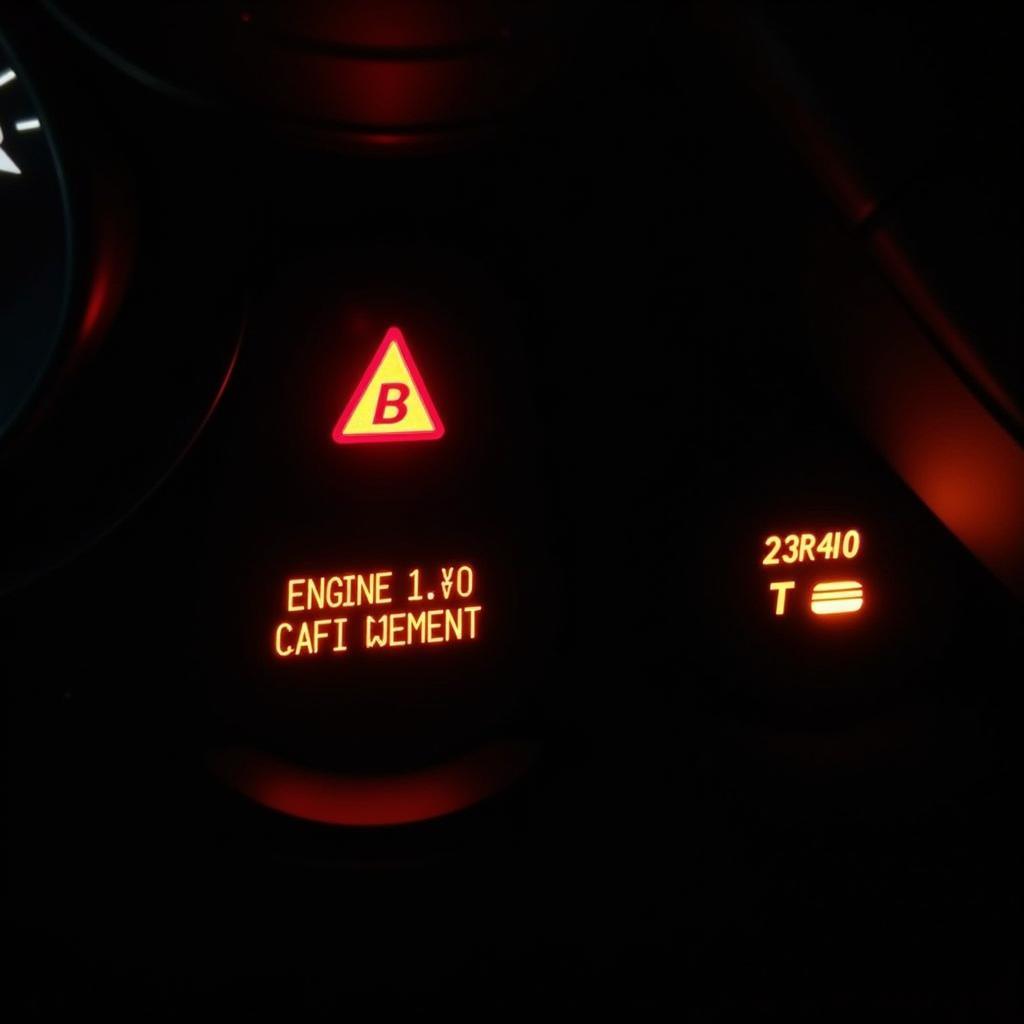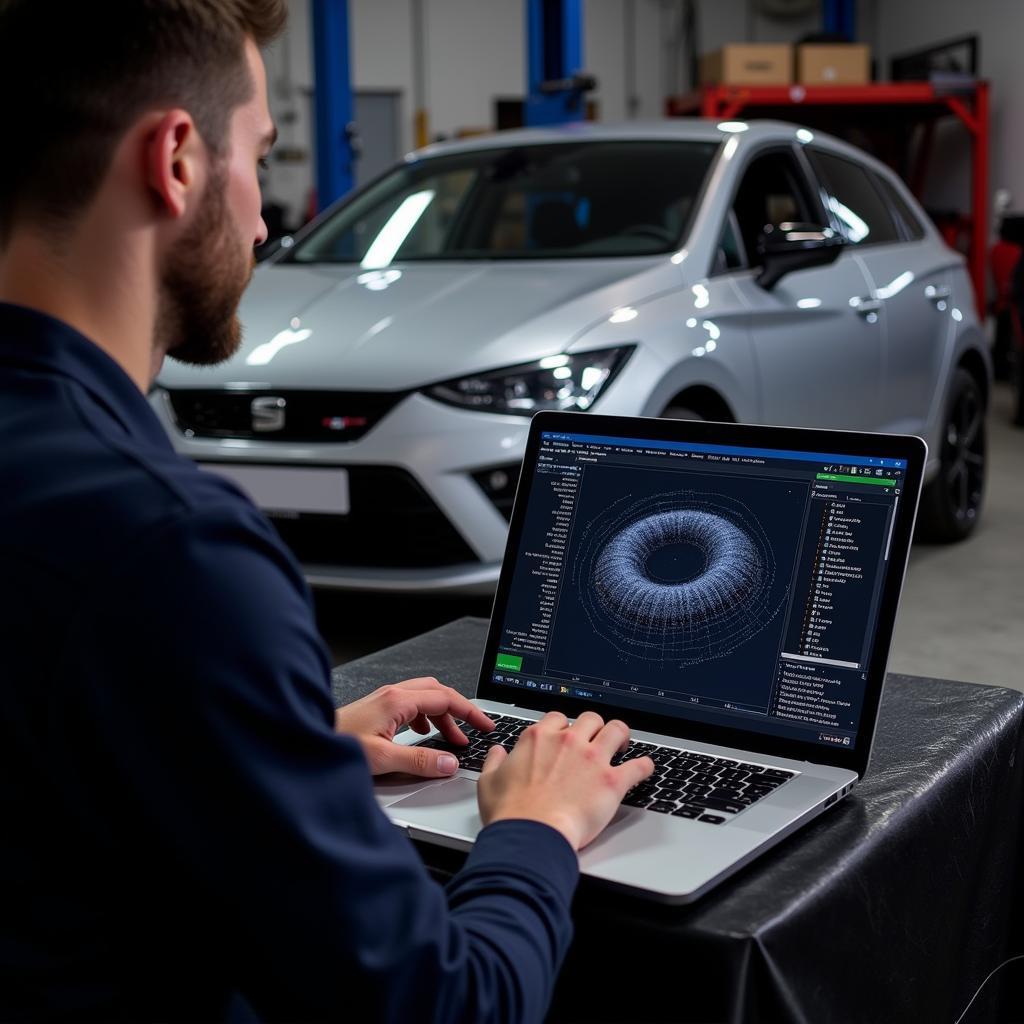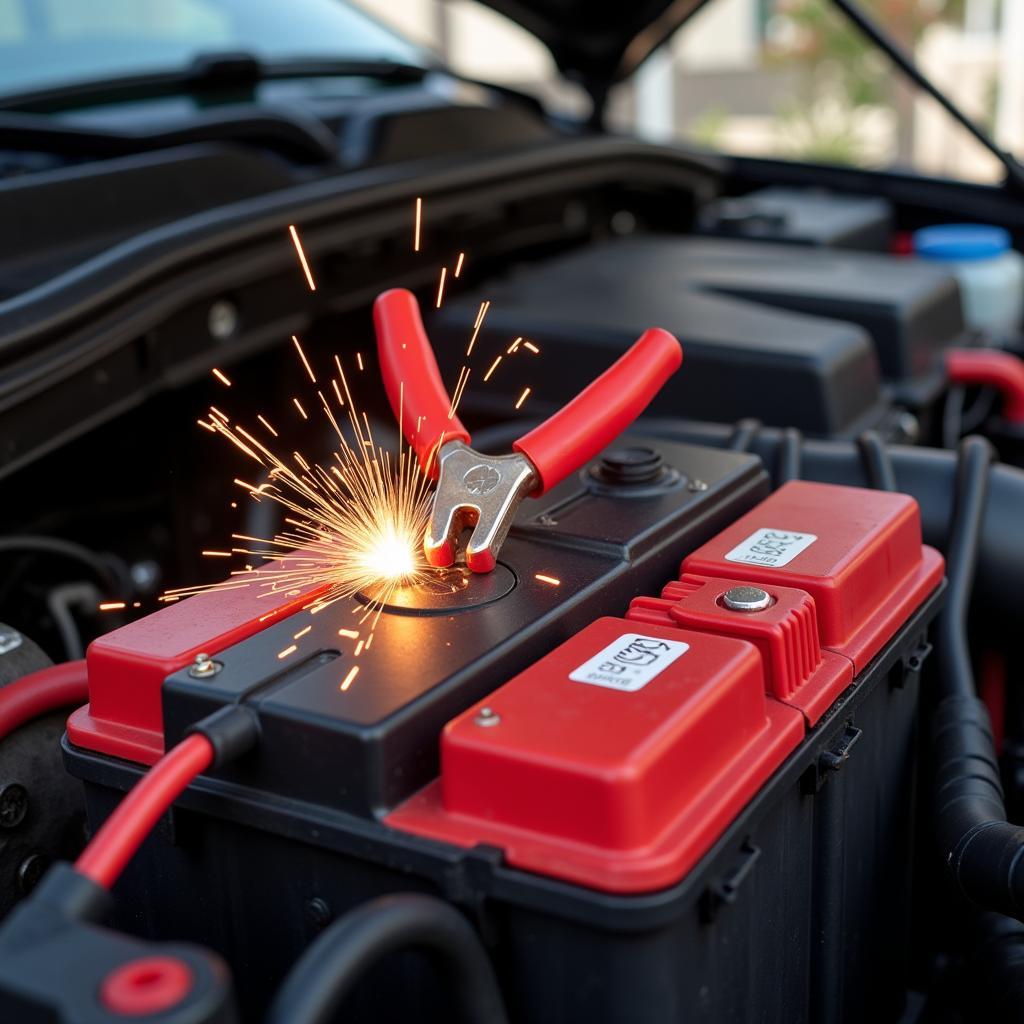A sudden flash on your dashboard—a warning light illuminating your Seat Leon Cupra’s instrument cluster. It can be a moment of panic, confusion, or perhaps just mild annoyance. What does it mean? Is it safe to keep driving, or do you need to pull over immediately? Understanding your car’s warning lights is crucial, not just for maintaining your vehicle’s health but also for your safety and those around you. This guide delves deep into the world of Seat Leon Cupra warning lights, equipping you with the knowledge to decipher their messages and take appropriate action.
Common Seat Leon Cupra Warning Lights and Their Meanings
While some warning lights are universal across most car models, others are specific to certain manufacturers or even individual models. Let’s break down some of the most frequent warning lights you might encounter in your Seat Leon Cupra:
Engine Management Light
Appearance: Usually an orange or yellow outline of an engine block.
Meaning: This light signals a potential issue with your engine or emission control system. It could be anything from a faulty sensor to a more serious problem like a misfire.
Action: While you might not need to pull over immediately, it’s crucial to get your vehicle diagnosed by a qualified mechanic as soon as possible to prevent further damage.
Electronic Stability Control (ESC) Light
Appearance: A car with skid marks, often accompanied by the letters “ESC” or “ESP.”
Meaning: This light indicates that the ESC system, which helps maintain stability during cornering or slippery conditions, is active or experiencing a malfunction.
Action: If the light flashes while driving, it means the system is currently working to correct a loss of traction. If it stays on continuously, there might be a fault with the system. Have it checked by a mechanic.
Tire Pressure Monitoring System (TPMS) Light
Appearance: An exclamation mark within a horseshoe-shaped outline, often with the letters “TPMS.”
Meaning: This light warns of low tire pressure in one or more tires, which can significantly impact fuel efficiency and handling.
Action: Check your tire pressure at the earliest opportunity and inflate them to the recommended level.
Brake System Warning Light
Appearance: A red circle with an exclamation mark in the center, or the word “BRAKE.”
Meaning: This light indicates a potential problem with your braking system, such as low brake fluid or worn brake pads.
Action: Do not ignore this light. Pull over immediately when safe and contact a mechanic or towing service. Driving with compromised brakes is extremely dangerous.
 Seat Leon Cupra Dashboard Warning Lights
Seat Leon Cupra Dashboard Warning Lights
Beyond the Basics: Understanding Less Common Warning Lights
While the warning lights mentioned above are some of the most frequent, your Seat Leon Cupra might display others, each with its own significance:
Airbag Warning Light
Appearance: A red or orange figure seated with an inflated airbag in front.
Meaning: This light signals a problem with your airbag system, which could prevent it from deploying in an accident.
Action: Seek immediate attention from a qualified mechanic to address any issues with your airbag system.
Power Steering Warning Light
Appearance: A steering wheel with an exclamation mark or the letters “EPS.”
Meaning: This light signifies a malfunction in your electric power steering system, which could make steering heavier than usual.
Action: While you might still be able to steer, exercise caution and have your car checked by a mechanic as soon as possible.
Diesel Particulate Filter (DPF) Warning Light
Appearance: Often a filter-like symbol or the letters “DPF.”
Meaning: Relevant only for diesel engines, this light indicates a problem with the DPF, which filters out soot from the exhaust.
Action: Consult your owner’s manual for instructions on how to regenerate the DPF. If the light persists, consult a mechanic.
 Seat Leon Cupra Engine Bay
Seat Leon Cupra Engine Bay
Why Ignoring Warning Lights is a Costly Mistake
Dismissing warning lights as mere annoyances can have serious consequences:
- Safety Risks: Many warning lights indicate potential safety hazards. Ignoring them could jeopardize your safety and that of other drivers.
- Increased Repair Costs: Addressing a problem early is often much cheaper than letting it worsen over time.
- Vehicle Breakdown: Ignoring critical warning lights can lead to sudden breakdowns, leaving you stranded.
Tips for Dealing with Warning Lights
- Consult your Owner’s Manual: Your Seat Leon Cupra’s manual is your best resource for understanding specific warning lights and recommended actions.
- Don’t Panic: While some lights require immediate action, many allow you to drive a short distance to a safe location before seeking help.
- Seek Professional Help: If unsure about a warning light’s meaning or how to proceed, consult a qualified mechanic for diagnosis and repair.
Embracing Technology: Remote Diagnostics for Your Seat Leon Cupra
In today’s digital age, remote diagnostics offer a convenient way to understand and address warning lights:
- Remote Scanning: Specialized software can remotely scan your vehicle’s computer for error codes, providing insights into the underlying issues.
- Expert Analysis: Experienced technicians can analyze the data and recommend the best course of action.
- Software Updates: In some cases, software updates can resolve issues triggered by software glitches.
 Mechanic Performing Remote Diagnostics on a Seat Leon Cupra
Mechanic Performing Remote Diagnostics on a Seat Leon Cupra
Conclusion
Understanding your Seat Leon Cupra’s warning lights is essential for safe and responsible driving. By familiarizing yourself with their meanings and taking prompt action, you can ensure a smoother, safer, and potentially less expensive driving experience. Remember, those illuminated symbols on your dashboard are not suggestions; they are your car’s way of communicating with you, urging you to pay attention and address potential issues.


